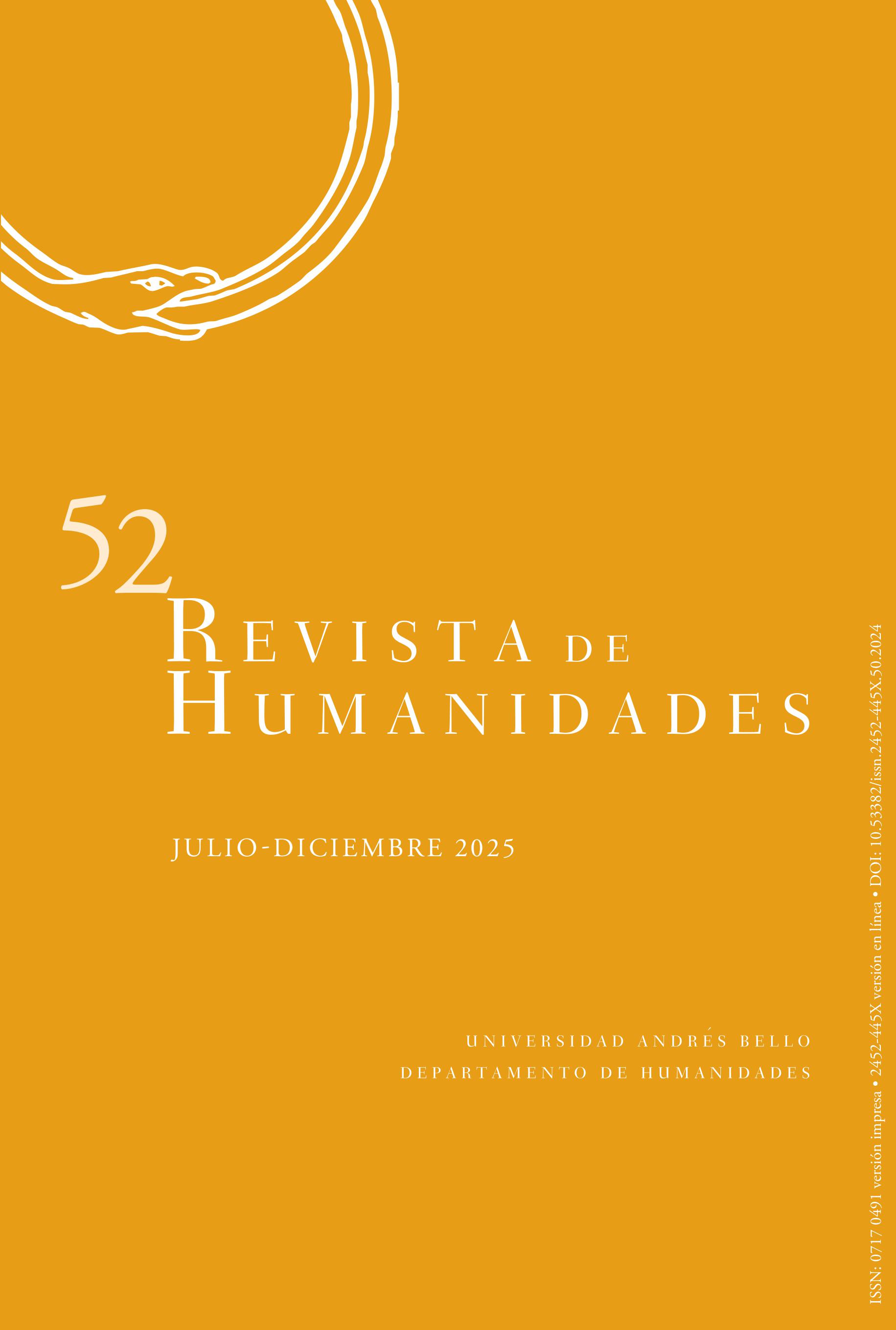Document from animation. Fantasy, memory and trauma in Waltz with Bashir by Ari Folman
DOI:
https://doi.org/10.53382/issn.2452-445X.943Keywords:
Animation, Documentary, Non-Fiction, Trauma, Memory, Ari FolmanAbstract
This article aims to analyze *Waltz with Bashir* from the perspective of cultural studies on memory and trauma, using a methodology based on textual analysis. Our research hypothesis is based on the idea that Ari Folman's animated documentary proposal accepts the legitimacy of fiction to construct metaphors that reflect the trauma of events that are not remembered accurately. To support this idea, a narratological analysis is proposed, focusing on those dreamlike scenes that underpin the film's discourse around the problem of non-existent images. The main conclusion is that the constructs of fiction are validated to the extent that, although they do not refer to entirely truthful events, they are legitimized through the testimony of survivors. Beyond this fact, although it is not the main objective of the film, which focuses on recreating non-existent images of the Sabra and Shatila massacre, the work ultimately reveals the filmmaker's own trauma as the final representation.
Downloads
References
Al-Shaikh, Zakaria. “Sabra and Shatila 1982: resisting the massacre”. Journal of Palestine Studies, vol. 14, núm. 1, 1984: 57-90.
Anselmi, William & Wilson, Sheena. “Technologies of Memory, Identity, and Oblivion in Persepolis (2007) and Waltz with Bashir (2008)”. En Familiar and Foreign: Identity in Iranian Film and Literature, 233-260. Alberta, Canadá: AU Press, 2015.
Antoun, Naira. “Film Review: Waltz with Bashir”. The Electronic Intifada. 2009. Disponible en: https://electronicintifada.net/content/film-review-waltz-bashir/3547 [Consultado el 13 de abril de 2022]
Assman, Jan. “Collective Memory and Cultural Identity”. New German Critique, vol. 65, 1995: 125-133.
Avisar, Ilan. “The Holocaust in Israeli Cinema as a Conflict between Survival and Morality”. En Israeli Cinema: Identities in Motion, 151-167. Austin: University of Texas Press, 2011.
Barthes, Roland. Mitologías. Madrid: Siglo XXI, 2010.
Bernard-Donals, Michael. Forgetful Memory. Representation and Remembrance in the Wake of the Holocaust. Albany: State University of New York Press, 2009.
Bradshaw, Peter. “Waltz With Bashir”. The Guardian. 2008. Disponible en: https://www.theguardian.com/film/2008/nov/21/waltz-with-bashir-folman [Consultado el 13 de abril de 2022]
Caldentey, Rocío Gabriela. “El cine documental israelí: nuevas aproximaciones al conflicto israelí-palestino”. Comunicación presentada en IV Seminario Internacional Políticas de la Memoria. Ampliación del Campo de los Derechos Humanos. Memoria y Perspectivas, Centro Cultural de la Memoria Haroldo Conti, Buenos Aires, 2011.
Didi-Huberman, Georges. Cuando las imágenes toman posición. Madrid: Antonio Machado Libros, 2008.
Didi-Huberman, Georges. Sortir du noir. París: Les éditions de minuit, 2015.
Diederichsen, Diedrich. “Kampf im Kopf”. Die Zeit. 2008. Disponible en: https://www.zeit.de/zustimmung?url=https%3A%2F%2Fwww.zeit.de%2F2008%2F46%2FWaltz-with-Bashir [Consultado el 13 de abril de 2022]
Dupont, Joan. “Ari Folman's Journey Into a Heart of Darkness”. The New York Times. 2008. Disponible en: https://www.nytimes.com/2008/05/19/arts/19iht-ari.1.13005821.html [Consultado el 13 de abril de 2022]
Duvdevani, Shmulik & Yosef, Raz. “Witnessing the perpetrator: testimony and accountability in current Israeli documentary film”. Continuum, vol. 34, núm. 2, 2020: 197-209.
Fine, Ellen. “Transmission of Memory: The Post-Holocaust Generation in the Diaspora”. En Breaking Crystal, 185-200. Urbana: University of Illinois, 1998.
Folman, Ari & Polonsky, David. Vals con Bashir. Barcelona: Salamandra, 2009.
García López, Sonia. “El documental de animación: un género audiovisual digital”. Zer, vol. 24, núm. 46, 2019: 129-145.
Gershenson, Olga & Hudson, Dale. “Absorbed by love: Russian immigrant woman in Israeli film”. Journal of Modern Jewish Studies, vol. 6, núm. 3, 2007: 301-315.
Golem. “Vals con Bashir. Entrevista con el autor”. Disponible en: http://www.-golem.es¬/valsconbashir/entrevista.php [Consultado el 13 de abril de 2022]
Gubern, Román. La imagen pornográfica y otras perversiones ópticas. Barcelona: Anagrama, 2005.
Hachero Hernández, Bruno. Trazar lo irrepresentable. La imaginación del horror en el documental animado a partir de Vals con Bashir [trabajo fin de máster]. Universidad Pompeu Fabra, Barcelona, 2014.
Hochberg, Gil Z. “Soldiers as Filmmakers: on the Prospect of ‘Shooting War’ and the Question of Ethical Spectatorship”. Screen, vol. 54, núm. 1, 2013: 44-61.
Hochberg, Gil Z. Visual Occupations: Violence and Visibility in a Conflict Zone. Durham & Londres: Duke University Press, 2015.
Honess Roe, Annabelle. Animating documentary [tesis doctoral]. University of Southern California, Los Ángeles, 2009.
Kalmanowitz, Debra & Lloyd, Bobby. Art therapy and political violence: With art, without illusion. Londres: Routledge, 2005.
Kapeliouk, Amnon. Sabra and Shatila: Inquiry into a Massacre. Belmont, Massachusetts: Association of Arab-American University Graduates, 1984.
Kent, Eleanor. “Perpetration, Guilt and Cross-Genre Representation in Ari Folman’s Waltz with Bashir”. En Representing Perpetrators in Holocaust Literature and Film, 271-292. Londres & Portland: Vallentine Mitchell, 2013.
Kilb, Andreas. “Ein Meilenstein des Kinos: Waltz with Bashir”. Frankfurter Allgemeine Zeitung. 2008. Disponible en : https://www.faz.net/aktuell/—feuilleton/kino/video-filmkritiken/video-filmkritik-ein-meilenstein-des-kinos-waltz-with-bashir-1105491.html [Consultado el 13 de abril de 2022]
Kohn, Ayelet & Weissbrod, Rachel. “Waltz with Bashir as a Case of Multidimensional Translation”. En Translation, Adaptation and Transformation, 123-144. Londres: Bloomsbury, 2012.
Kroustallis, Vassilis. “Failure to Think, Failure to Move: Handicapped Reasoning in Waltz with Bashir”. Jewish Film & New Media, vol. 2, núm. 2, 2014: 132-152.
Kunert-graf, Rachel. “Dehumanized Victims: Analogies and Animal Avatars for Palestinian Suffering in Waltz with Bashir and War Rabbit”. Humanities, vol. 7, núm. 79, 2018: 1-12.
Landesman, Ohad & Bendor, Roy. “Animated recollection and spectatorial experience in Waltz with Bashir”. Animation, vol. 6, núm. 3, 2011: 353-370.
Lane, Anthony. “Private Wars. Valkyrie and Waltz with Bashir”. The New Yorker. 2008. Disponible en: https://www.newyorker.com/magazine/2009¬/01/05/private-wars# [Consultado el 13 de abril de 2022]
Lanzmann, Claude. “Le lieu et la parole”. Cahiers du cinéma, núm. 374, 1985: 21.
Lanzmann, Claude. La liebre de la Patagonia. Madrid: Seix Barral, 2011.
Leclerc, Josée. “Re-Presenting Trauma: The Witness Function in the Art of the Holocaust”. Art Therapy, vol. 28, núm. 2, 2011: 82-89.
Li, Shu & Li, Maohua. “Analysis on the Art Therapy Function of Animated Documentary Films”. Advances in Social Science, Education and Humanities Research, núm. 142, 2017: 505-507.
Lindsey, Ursula. “Shooting Film and Crying”. Middle East Research and Information Project. 2009. Disponible en: https://merip.org/2009/03/shooting-film-and-crying/ [Consultado el 10 de febrero de 2020]
Lyotard, Jean-François. The Differend: Phrases in Dispute. Minneapolis: University of Minnesota Press, 1988.
MacNair, Rachel M. “Killing as Trauma”. Trauma Psychology. Issues in Violence, Disaster, Health and Illness. Volume 1: Violence and Disaster, 147-162. Londres: Praeger, 2007.
Mansfield, Natasha. “Loss and Mourning Cinema’s Language of Trauma in Waltz with Bashir”. Wide Screen, vol. 1, núm. 2, 2010: 1-14.
Martín Sanz, Álvaro. “Animaciones traumatizadas. La imagen dialéctica benjaminiana en Flee (2021)”. Con A de animación, núm 16, 2023: 24-39.
Martín Sanz, Álvaro. “Relatar a través del trauma del perpetrador. Memoria y representación en The Act of Killing de Joshua Oppenheimer”. Fonseca Journal of Communication, núm. 23, 2021: 253-273.
Martín Sanz, Álvaro. “Representar el trauma. Posmemoria y ética de la representación en Maus de Art Spiegelman”. Anclajes, vol. 26, núm 2, 2022: 67-83.
McCurdy, Kate. “Waltz with Bashir”. DG Magazine. 2016. Disponible en: http://www.dgdesignnetwork.com.au/members/131/Waltz_with_Bashir.pdf [Consultado el 15 de mayo de 2022]
Miller, Giulia. Studying Waltz with Bashir. Leighton Buzzard, Inglaterra: Auteur, 2017.
Mohamed, Saira. “Of Monsters and Men: Perpetrator Trauma and Mass Atrocity”. Columbia Law Review, núm. 115, 2015: 1157-1216.
Nichols, Bill. “Waltzing with Bashir: Perpetrator Trauma and Cinema”. Studies in Documentary Film, vol. 8, núm. 1, 2014: 81-85.
Pinotti, Luciana. “La animación no ficcional. Un análisis sobre la construcción del sentido en el documental animado Vals con Bashir”. Cine Documental, núm. 12, 2015: 142-168.
Pintor Iranzo, Iván. “‘Yo bombardeé Beirut…’”. Cultura/s La Vanguardia, 18 de febrero de 2009: 26-27.
Ramati, Ido. Images in Transformation: Representations of Germany and Germans in Contemporary Israeli Fiction Cinema [trabajo académico]. Universidad Hebrea de Jerusalén, Jerusalén. Sin fecha.
Sánchez, Sergi. “Vals con Bashir. Para exorcistas de conflictos bélicos”. Fotogramas. 2009. Disponible en: https://www.fotogramas.es/peliculas-criticas/a299129-/vals-con-bashir/ [Consultado el 13 de abril de 2022]
Schäuble, Michaela. “‘All Filmmaking is a Form of Therapy’: Visualizing Memories of War Violence in the Animation Film Waltz with Bashir (2008)”. En Violence Expressed. An Anthropological Approach, 203-222. Surrey: Ashgate, 2011.
Shabi, Rachel. “Ajami and Lebanon: Two Filmic Faces of Israel”. The Guardian. 2010. Disponible en: https://www.theguardian.com/film/2010/may/06/ajami-lebanon-israel-filmmaking [Consultado el 13 de abril de 2022]
Shahid, Leila. “The Sabra and Shatila massacres: Eye-witness reports”. Journal of Palestine Studies, vol. 32, núm. 1, 2002: 36-58.
Sharmill Films. “Waltz with Bashir. Production notes” [material promocional de la película]. Disponible en: http://static.thecia.com.au/reviews/w/waltz-with-bashir-production-notes.rtf [Consultado el 13 de abril de 2022]
Sofian, Sheila. “The Truth in Pictures”. FPS Magazine, núm. 05, 2005: 7-11.
Sony Pictures Classics. “Bio. About Ari”. 2008. Disponible en: https://www.sonyclassics.com/waltzwithbashir/aboutAri.html [Consultado el 13 de abril de 2022]
Spiegelman, Art. Maus. Barcelona: Penguin Random House, 2019.
Stewart, Garrett. “Screen memory in Waltz with Bashir”. Film Quarterly, vol. 63, núm. 3, 2010: 58-62.
Szczupak, Justyna. “Unveiling the Disguise of Trauma in Waltz with Bashir”. With Caffeine & Careful Thought, vol. 1, núm. 1, 2013: 1-6.
Walker, Janet. Trauma Cinema: Documenting Incest and the Holocaust. Londres & Berkeley: University of California Press, 2005.
Ward, Paul. “Animated Interactions: Animation Aesthetics and the World of the ‘Interactive’ Documentary”. En Animated Worlds, 113-129. Londres: John Libbey, 2006.
Yoshida, Yuko. “The Return to Unreachable Spaces in Ari Folman’s Waltz with Bashir”. Image [&] Narrative, vol. 15, núm. 3, 2014: 81-92.
Žižek, Slavoj. “‘… I Will Move the Underground’: Slavoj Zizek on Udi Aloni's Forgiveness”. International Journal of Applied Psychoanalytic Studies, vol. 6, núm. 1, 2009: 80-83.
Žižek, Slavoj. “A Soft Focus on War”. In These Times. 2010. Disponible en: http://inthesetimes.com/article/5864/a_soft_focus_on_war/ [Consultado el 13 de abril de 2022]
Zylberman, Lior. “Imágenes ausentes. Documental performativo, testigo y testimonio”. Culturas, núm. 10, 2017: 141-157.
Downloads
Published
Issue
Section
License
Copyright (c) 2025 Revista de humanidades (Santiago. En línea)

This work is licensed under a Creative Commons Attribution 4.0 International License.
You are free to:
Share — copy and redistribute the material in any medium or format
The licensor cannot revoke these freedoms as long as you follow the license terms.
Under the following terms:
-
Attribution — You must give appropriate credit, provide a link to the license, and indicate if changes were made. You may do so in any reasonable manner, but not in any way that suggests the licensor endorses you or your use.
-
NonCommercial — You may not use the material for commercial purposes.
-
NoDerivatives — If you remix, transform, or build upon the material, you may not distribute the modified material.
- No additional restrictions — You may not apply legal terms or technological measures that legally restrict others from doing anything the license permits.
Notices:
- You do not have to comply with the license for elements of the material in the public domain or where your use is permitted by an applicable exception or limitation.
- No warranties are given. The license may not give you all of the permissions necessary for your intended use. For example, other rights such as publicity, privacy, or moral rights may limit how you use the material.

















